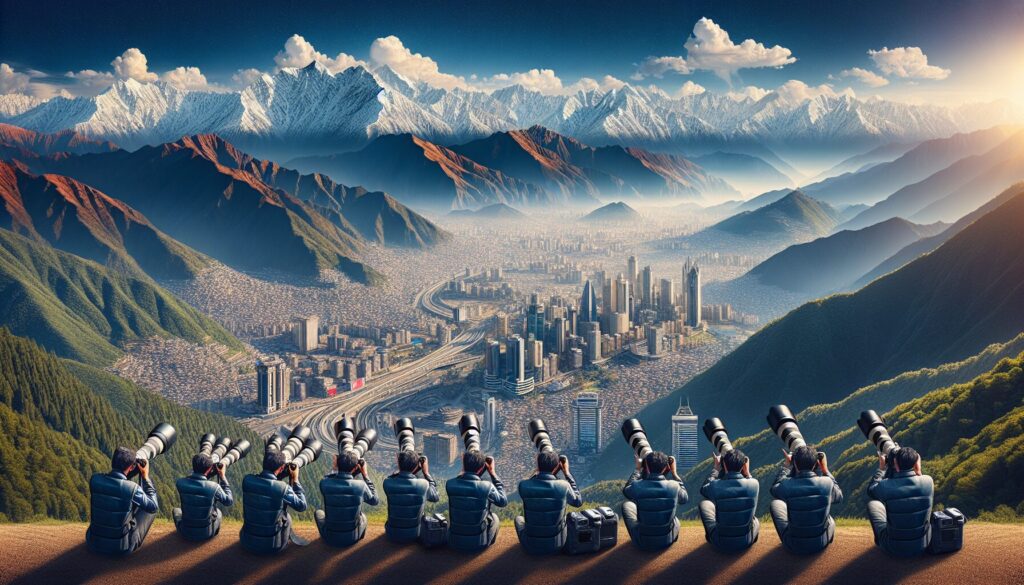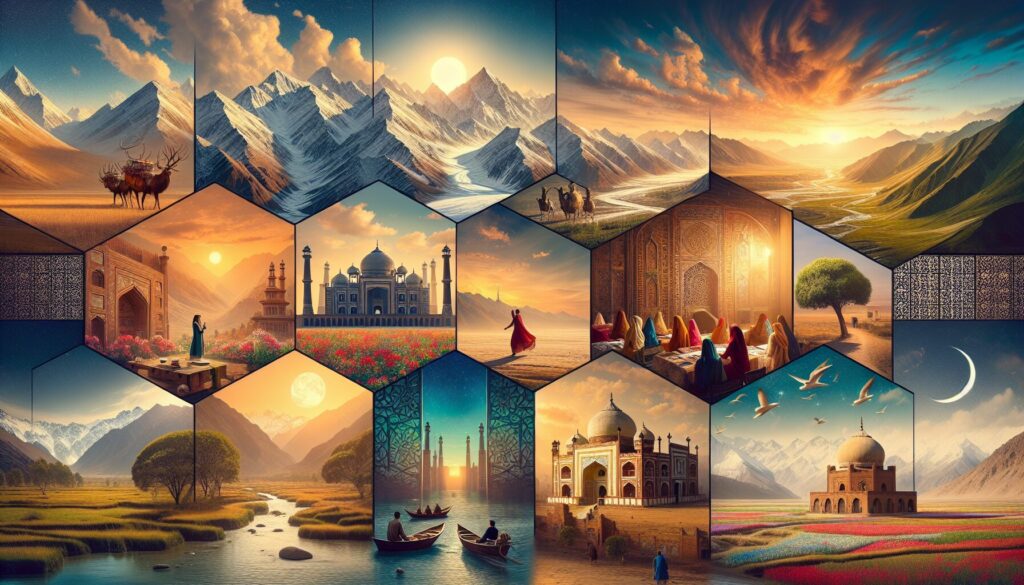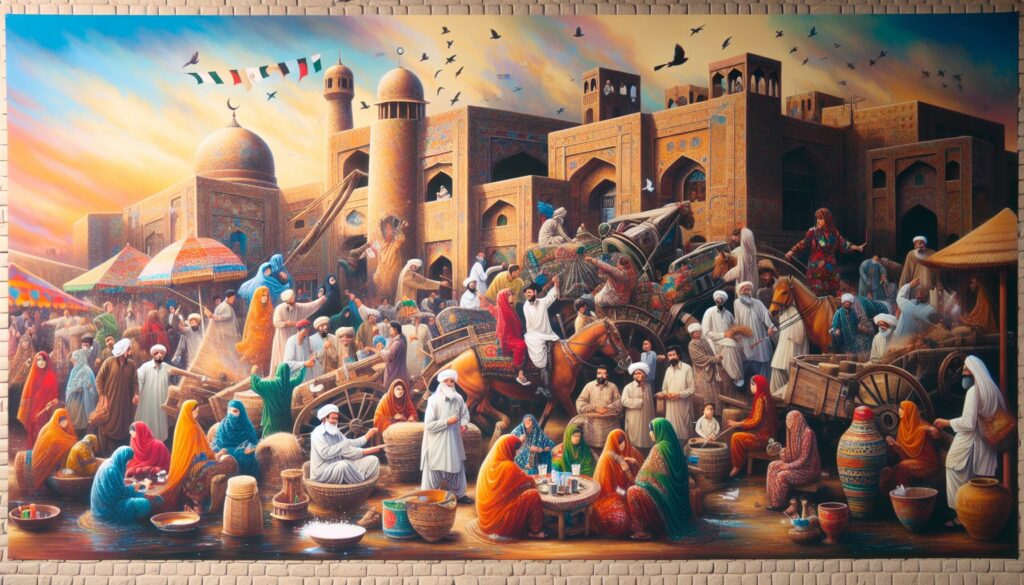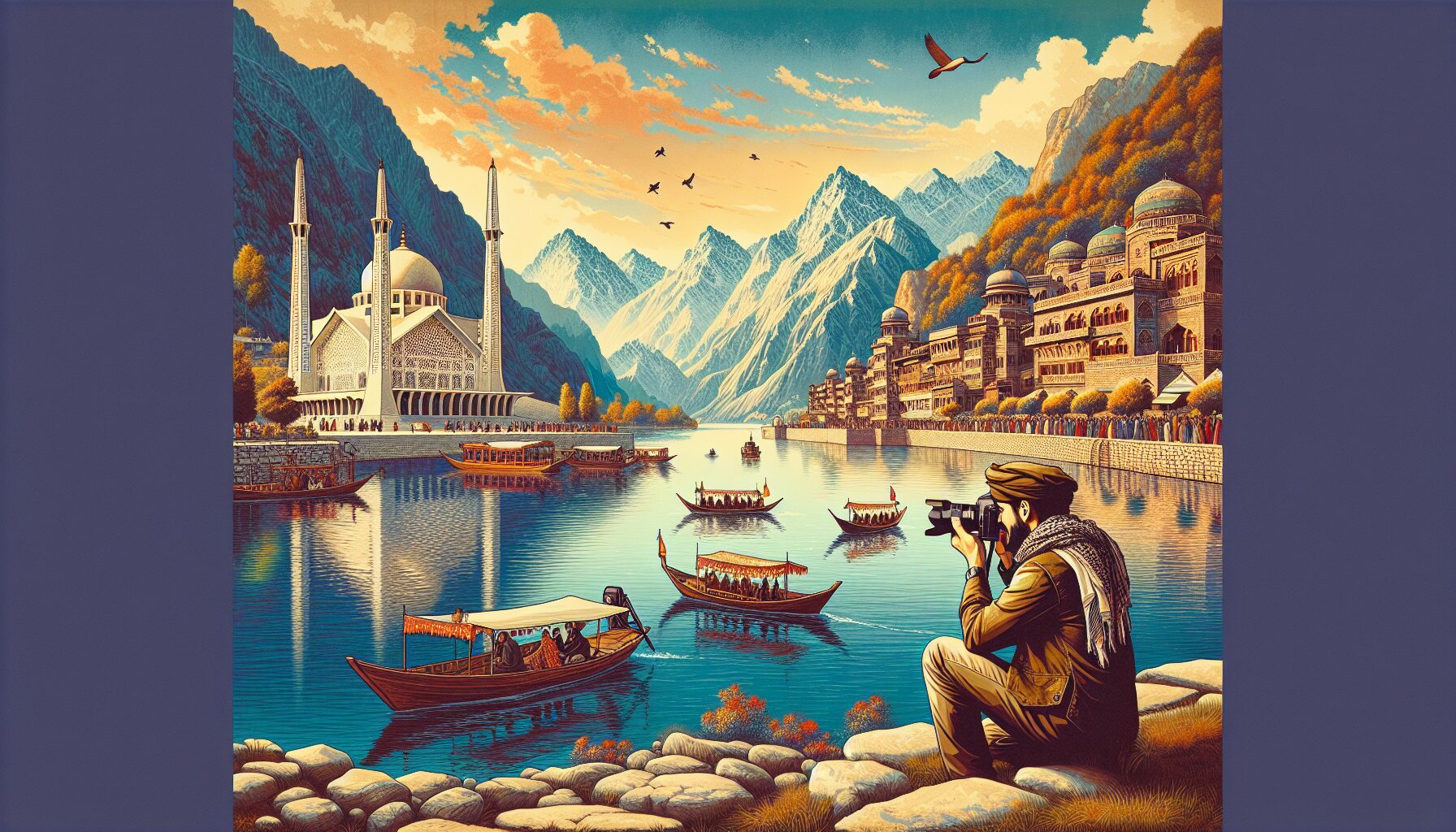Exploring ‘The Complete A-Z Guide to Photography in Pakistan’ had me diving deep into some of the country’s hidden gems. I remember the early morning light at the Badshahi Mosque, where I used a wide-angle lens to capture its majestic architecture. The intricate details came alive, showing the mosque’s grandeur. For low-light captures, like at the Hunza Valley night sky, my camera’s full-frame sensor made all the difference. This journey through Pakistan’s diverse landscapes offered countless opportunities to play with different shutter speeds and ISO settings, unveiling the country’s vibrant culture and breathtaking scenery through my lens.
Essential Camera Gear for Capturing Pakistan's Essence
When you’re planning to capture the vibrant essence of Pakistan, having the right camera gear can make all the difference. Trust me, the landscapes here are as diverse as they are breathtaking, and you’ll need equipment that can keep up. Here’s a breakdown of the essentials you’ll want in your kit.
Camera and Lenses
Start with a full-frame camera for superior image quality, especially in the low-light conditions you’ll encounter in places like the bustling streets of Lahore. I’ve found that a 24-70mm f/2.8 lens is incredibly versatile for everything from portraits to landscapes. For those stunning shots of the mountains in Hunza Valley, a 70-200mm telephoto lens will bring the peaks closer and maintain sharpness.
Tripod and Filters
A sturdy tripod is crucial for long exposure shots. I remember capturing the milky way over the desert in Cholistan Desert with a 30-second exposure, and without a tripod, it would’ve been impossible. Don’t forget a set of ND filters to handle the harsh midday sun, especially when you’re shooting reflective landscapes like the lakes in Skardu.
Accessories
- Extra batteries and memory cards: Pakistan’s remote areas often lack charging facilities, so be prepared.
- A waterproof camera bag: This is essential for the unpredictable weather, particularly during monsoon season in the northern regions.
- Remote shutter release: Perfect for avoiding camera shake during long exposures, especially useful during twilight photography sessions.
With this gear, you’ll be well-equipped to capture the heart and soul of Pakistan. Whether it’s the vibrant colors of a local bazaar or the serene beauty of its mountains, the right equipment will help ensure your photos are as stunning as the moments themselves.
Top Photography Locations: From Mountains to Metropolises

Let’s dive into some of the most photogenic spots in Pakistan, where the landscapes are as diverse as they are breathtaking. Starting up north, the Karakoram Range is a must-visit for any landscape photographer. When I visited Hunza Valley, I remember using a wide-angle lens to capture the sweeping panorama of the valley surrounded by snow-capped peaks. The clear, crisp air meant I could shoot with an ISO setting of 100, ensuring maximum image quality. Trust me, the sight of the sun setting behind Rakaposhi is a memory card filler.
In contrast, head south to the bustling metropolis of Karachi. It’s a haven for street photography enthusiasts. The vibrant streets of Saddar are alive with stories. I often shoot here with a prime lens to handle the low-light conditions in narrow alleys. The historic Frere Hall offers an architectural feast, where you can play with perspective and depth of field to create stunning compositions.
Coastal Beauty and Ancient Wonders
- Makran Coastal Highway: This stretch is ideal for road trip photography. The rugged cliffs and turquoise waters are best captured during the golden hour. I used a polarizing filter to reduce glare and enhance the color of the sea.
- Mohatta Palace: Located in Karachi, this palace is a masterpiece of architectural photography. Its intricate carvings and domes are perfect for practicing symmetry and framing techniques.
For those fascinated by history, the ancient city of Mohenjo-Daro offers a unique backdrop. The ruins are a playground for exploring textures and patterns. I recommend shooting in RAW format to capture the nuances of the ancient bricks. According to a report by National Geographic, these ruins are among the best-preserved in South Asia.
Whether you’re capturing the pristine beauty of the north or the vibrant energy of the cities, Pakistan is a photographer’s paradise. Each location offers unique challenges and rewards, making every shot a new adventure.
Understanding Light and Seasons in Pakistani Photography

Let’s chat about how light and seasons impact your photography in Pakistan. You know, the way the sun dances across the landscape here is unlike anywhere else. It’s all about understanding how to make the most of it. When I first started capturing the vibrant streets of Lahore, I realized the magic really happens during the golden hour. That’s the hour after sunrise or before sunset when the light is soft and warm. I remember using a 50mm f/1.8 lens to achieve that dreamy bokeh effect on a bustling street, with just the right amount of light hitting the lens.
Seasons and Their Impact
Pakistan’s diverse seasons offer unique opportunities for photographers. Each season presents a different kind of beauty:
- Spring: The blooming flowers in places like the Hunza Valley are a paradise for nature photography. Use a polarizing filter to enhance the vivid colors of the blossoms.
- Summer: Head to the cooler northern areas. The clear skies are perfect for astrophotography. I remember shooting the Milky Way in Skardu with a wide-angle lens and a long exposure of 20 seconds.
- Autumn: The changing leaves in Swat Valley create a canvas of oranges and reds. A tripod is essential for capturing stable, high-resolution images.
- Winter: The snow-covered landscapes in Nathiagali are breathtaking. Use a camera with a full-frame sensor to handle the low light and capture the serene beauty.
Tips for Capturing Light
To make the most of available light, consider these tips:
- Use reflectors to bounce natural light onto your subject, especially during midday when the sun is harsh.
- Experiment with different exposure settings. A slightly underexposed shot can bring out richer colors and details.
- Be aware of the direction of light. Side lighting can add depth and texture to your photos.
Remember, each region has its own charm. Whether you’re snapping street scenes in Karachi or landscapes in Gilgit, understanding light and seasons can elevate your photography game.
Cultural Photography: Capturing Traditions and Daily Life

Exploring the cultural fabric of Pakistan through photography is like diving into a vibrant tapestry. Each region, from the bustling streets of Karachi to the serene valleys of Swat, offers unique opportunities to capture the essence of daily life and time-honored traditions. Let’s dive into some tips and specifics that can help you truly encapsulate these moments.
Best Times and Techniques
Light is your best friend, especially during the golden hour—those magical moments just after sunrise and before sunset. I remember shooting at Lahore’s Badshahi Mosque and using a wide aperture of f/2.8 to beautifully blur the background, focusing on a man deep in prayer. This technique can add depth and emotion to your photos.
Engage with the Locals
When capturing daily life, interacting with people is key. I once visited a small village near Attock and was invited to a local festival. I used my DSLR with a full-frame sensor to handle the low light as I photographed dancers in traditional attire. This sensor type helps in retaining detail in dimly lit environments.
- Always ask for permission before taking someone’s photo.
- Share your shots with them; it often leads to more candid, genuine expressions.
Focus on Details
Look for unique elements that tell a story. In the Thar Desert, intricate henna designs on a bride’s hands caught my eye. I used a macro lens to capture the delicate patterns, bringing the cultural richness into focus.
Visit Cultural Hubs
Destinations like the Lok Virsa Museum in Islamabad are treasure troves for cultural photography. They offer an array of traditional crafts and costumes, perfect for capturing the diverse heritage of Pakistan. Use a fast lens to highlight intricate details in low-light settings.
Incorporating these tips into your photography will elevate your ability to document traditions authentically. Whether through festivals, daily routines, or architectural marvels, there’s always a story waiting to be told in every corner of Pakistan.
Tips and Tricks for Safe and Ethical Photography in Pakistan
When you’re out and about capturing the stunning beauty of Pakistan, it’s essential to keep safety and ethics in mind. Let me share a few tips from my own adventures around this vibrant country.
Respect the Local Culture
Pakistan’s rich cultural tapestry offers countless photo opportunities. However, always remember to ask permission before photographing people, especially in rural areas. Once, while in the serene valley of Hunza Valley, I approached a local family for a portrait. I used my trusty camera with a full-frame sensor to handle the low-light of the golden hour, and they appreciated the courtesy, making the shot even more meaningful.
Be Mindful of Religious Sites
Religious sites, like the stunning Badshahi Mosque, are breathtaking but require sensitivity. Avoid using flash inside mosques and shrines to maintain the sanctity of these places. I often switch to a fast prime lens, such as a 50mm f/1.8, to make the most of natural lighting, ensuring I capture the ambiance without being intrusive.
Stay Safe and Aware
- Travel in Groups: It’s always safer, especially in less populated areas. Plus, it’s more fun to experience Pakistan’s beauty with friends!
- Keep Valuables Secure: Use a discreet camera bag to avoid drawing attention.
- Know Your Gear: Familiarize yourself with your equipment. Quick adjustments prevent you from missing the perfect shot while staying aware of your surroundings.
Engage with the Community
Engaging with locals not only enriches your travel experience but also opens doors to unique photography opportunities. During a visit to the bustling streets of Lahore, I chatted with a shopkeeper who invited me to capture the vibrant bazaar from their shop’s rooftop, offering a perspective I wouldn’t have found otherwise.
Environmental Responsibility
Remember to leave no trace. Whether you’re shooting landscapes in the Karakoram or street photography in Karachi, respect the environment. Carry reusable gear and dispose of waste properly to preserve the beauty for others.
Conclusion
At the end of our photographic journey through Pakistan, it’s clear that this country is a treasure trove of visual stories waiting to be captured. From the majestic peaks of the Karakoram to the vibrant streets of Lahore, each location offers something unique for every photographer. I remember standing at the edge of Attabad Lake, using a polarizing filter to reduce glare and enhance the rich turquoise color of the water. With a wide aperture set at f/2.8, I managed to focus on the shimmering surface while blurring the distant peaks into a dreamy backdrop. Moments like these are what make photography in Pakistan so rewarding and unforgettable.
Whether you’re wielding a DSLR with a full-frame sensor or a smartphone with a decent camera, the key is to be ready for the unexpected. I’ve often found myself capturing spontaneous portraits of local artisans in small bazaars, where the natural light filtering through colorful awnings provides the perfect soft illumination. A reliable tripod is essential, especially when shooting in low-light conditions or wanting to capture the vibrant nightlife in places like Karachi. And don’t forget those extra batteries and memory cards; trust me, you’ll need them!
Exploring the diverse landscapes and cultures of Pakistan through photography is more than just an art—it’s a way to connect with the world and the people around you. The warmth and hospitality of the locals often lead to unforgettable interactions and stories. Plus, sharing your work on platforms like Instagram not only showcases Pakistan’s beauty but also elevates your photography skills by connecting with a global community.
With each click of the shutter, you’re not just capturing images; you’re weaving a tapestry of experiences that reflect the heart and soul of Pakistan. So, grab your camera, pack your bags, and immerse yourself in the dramatic landscapes and vibrant cultures this country has to offer. Remember, the best photo opportunities often come when you least expect them, so keep your eyes open and your camera ready!
Continue Exploring
Unleash your inner photographer and embark on a visual journey through Pakistan's breathtaking landscapes. From hidden gems to stunning vistas, discover the secrets to capturing nature's enchanting beauty like never before.
Frequently Asked Questions
What are the best photography spots in Pakistan for capturing natural landscapes?
Pakistan offers a plethora of breathtaking landscapes for photography enthusiasts. Key spots include the majestic Hunza Valley, the serene Swat Valley, the dramatic Fairy Meadows near Nanga Parbat, and the picturesque Deosai Plains. Each location offers unique opportunities to capture the diverse natural beauty of Pakistan.
How can I ensure respectful photography practices when capturing cultural events in Pakistan?
Respectful photography in Pakistan involves understanding and honoring local customs and traditions. Always ask for permission before photographing people, particularly in rural or tribal areas. It’s also essential to be aware of and adhere to religious sensitivities, especially during sacred events or in holy sites. Building rapport and engaging with locals can greatly enhance your photographic experience and results.
What equipment is recommended for travel photography in Pakistan's diverse environments?
For travel photography in Pakistan, a versatile camera with a good zoom lens is essential to capture both wide landscapes and detailed close-ups. A sturdy tripod is recommended for stability in rugged terrains. Consider bringing a weather-sealed camera bag to protect your gear from dust and moisture, and pack extra batteries and memory cards to avoid disruptions during your photography adventures.


Leave a Reply